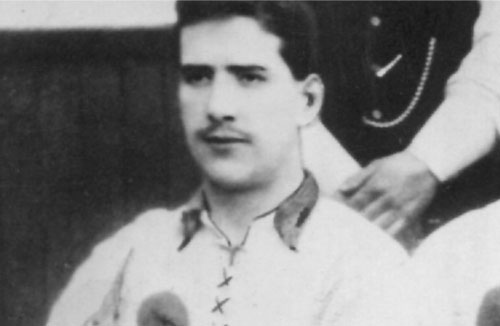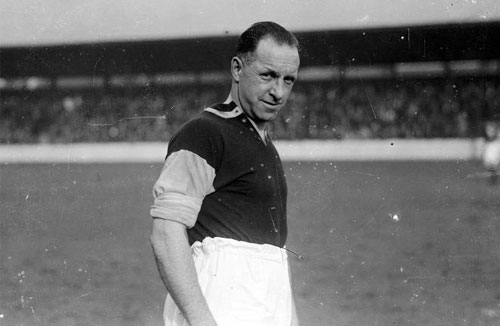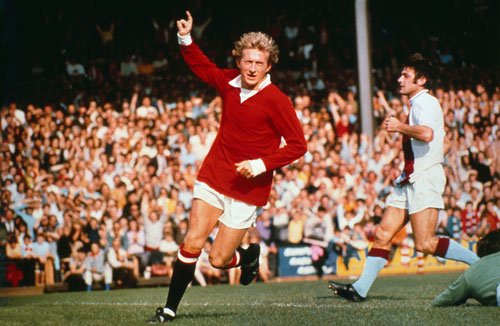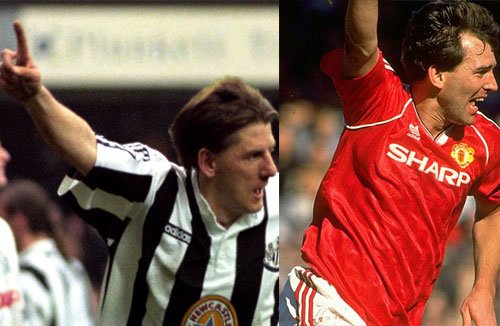Football Transfers Through The Ages

And so goes another deadline, closing the window for football transfers. The excitement has died down, the deals done and the dust settled for another while. The high prices and high profile players switching shirts is not a new phenomenon in football, it has been part and parcel of the game since football became an organised association. The advent of Sky Sports in the early 90s did bring some sort of razzamatazz to transfer sagas, but before all of that there was the first real record-breaking transfer and one which undoubtedly kicked off the whole transfer market that we know today.
In 1893 Scottish footballer Willie Groves moved from West Brom to Aston Villa for the sum of £100. The high fee was paid mainly because the FA ordered Villa to stump up £100 due to the fact they had illegally poached the Scotsman. Although Groves went on to win the league with Villa, he left a year later due to an internal dispute concerning his contract, even in simple Victorian times football served not only as a sport but as a soap opera too. Willie Groves went back to Scotland where he tragically died of tuberculosis in 1908 at the age of 38.
The £100 transfer fee of Groves shocked many in 1893, but Middlesbrough went one better in 1905 and paid Sunderland £1,000 for Alf Common. He stayed with ‘Borough for five years helping them stay out of relegation with 58 goals in 168 games. After the first world war the football league was expanded to what would eventually be the foundation of today’s Premier League. This was also a time which ushered in the era of the professional football star whose fees would rise to excessive amounts.

In February 1922 Falkirk broke the world record fee for a footballer when they dished out £5,000 for West Ham centre forward Sydney Puddefoot. The signing of Puddefoot was more the idea of the Falkirk fans rather than the club and the fans ended up paying half of the Londoner’s transfer fee when they set up a public conscription. Falkirk club paid the other half of Puddefoot’s fee and he went on to play in 147 matches and score 74 goals.
In 1928 Arsenal made the move to break the record fee again with their purchase of Bolton forward David Jack for the sum of £10,000. The story goes that Arsenal manger Herbert Chapman trashed out the transfer details with David Jack’s representatives over a few gins in a bar, but cunning Chapman was drinking G&Ts without the gin and let the other side get as drunk as they could before he got them to an agreed price for the player.
In the aftermath of World War II the football landscape changed once again as football at club level became more internationalised. Long before the likes of Gareth Bale became the subject of an enormous transfer fee there was another Welshman making such headlines. William John Charles was an adaptable footballer who could play in any part of the field and the Swansea native became a firm favourite at Leeds United during the early 1950s. In 1957 Charles was signed by Juventus for the staggering fee of £65,000. Charles would become a celebrated player in Italian football and came third in the race for the Ballon D’or of 1959. In 1962 Charles became the subject of yet another notable transfer fee when Leeds bought him back for £53,000. Unfortunately Charles never fit back into the Leeds fold and was sold on to Roma A.C for £70,000.

The 1960s would herald in the era of glamorous football and Denis Law became part that glamour when the English record fee was broken with Manchester United’s payment of £115,000 for the Scotsman in 1962.
If the 1960s were the beginning of the glamour age then the 1970s would see in the serious business age of football; starting with Martin Peters in 1970 who signed from West Ham to Spurs for £200,00. Peters was part of the 1966 World Cup wining English team and while his four year stint at White Heart Lane resulted in a mixture of success and failure, he would be the first in a long line of high priced English players during the 1970s. Kevin Keegan was a Liverpool player during the early 70s until the lure of a high price and European football took him from Anfield to Hamburg in 1977. Keegan’s fee was an amazing £500,00 but after two years he left West Germany to go back to the English league and signed for Southampton in 1980 for a fee of £420,000.
Before the dawn of the 1980s, English football would see its first £1million player in the form of Trevor Francis. From 1970 to ‘78 Francis played for Birmingham before venturing stateside to play for Detroit Express in the fledgling American soccer scene, but Brian Clough and Nottingham Forest stunned the football world in 1979 when they offered a fee of little over £1million for Francis. The fee was of course agreed and the ever eccentric Clough introduced his new million pound man to the media in a rushed press conference. Clough was on his way to a game of squash and was decked out in his red squash tracksuit complete with racquet.

The 80s would see high profile transfer deals such as Bryan Robson who moved from West Brom to Man Utd for a record breaking fee of £1.5million. It would take another six years before that record was broken and it came from Utd’s rivals at Anfield who paid Newcastle Utd £1.9million for their striker Peter Beardsley.
The 90s brought with it the Premiership which gave a sprinkling of glitz to football while big money became the name of the game with sponsorship deals and television rights. By 1995 English football was in the grip of a commercialised reinvention and Andy Cole kicked off yet another era of record breaking deals with his move from Newcastle to Manchester United for £7million. Alan Shearer’s fee caused a stir in 1996 when he left Blackburn for Newcastle for £15million.
After the 90s the business of football kept growing. Rio Ferdinand joined Man Utd from Leeds for just over £29million in 2002 while in 2009 Man Utd sold Ronaldo for £80million to Real Madrid. Now as we all digest the incredible amount of money that football clubs have spent in this transfer window, we can only think how far and how fast football has evolved from a simple street game into a highly marketed profitable machine.
